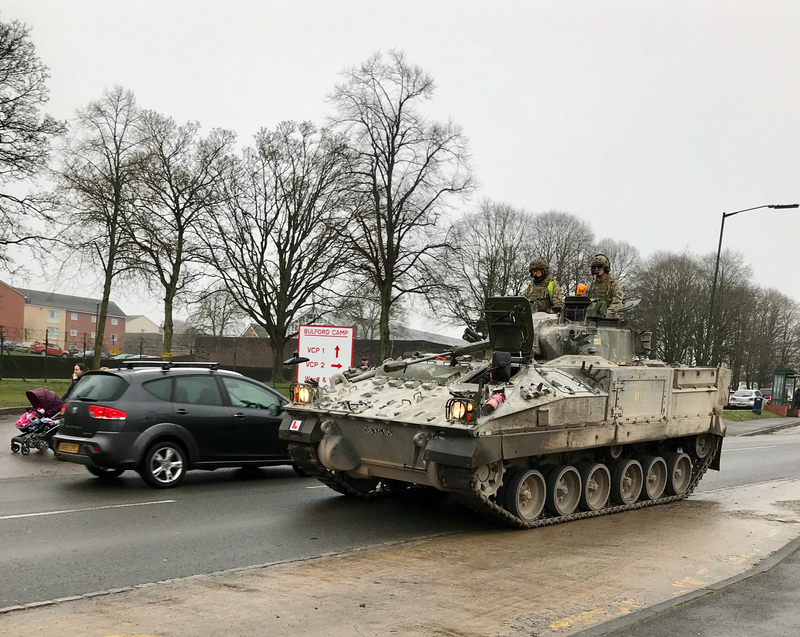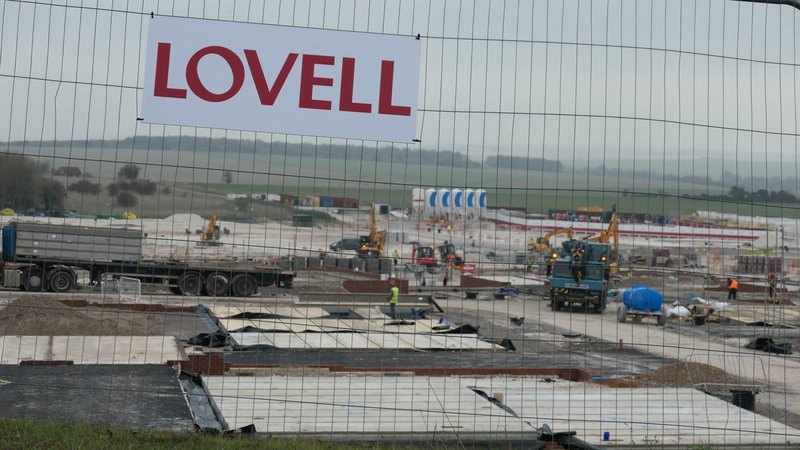Army basing and military-civilian integration
The quality and design of military housing is intimately related to the wider project of Army Basing and Military-Civilian Integration because it has a bearing on the question of who takes care of personnel and their families. It is well-known that housing for military personnel is a complex and fraught issue. A 2007 exposé revealed the terrible conditions of army family housing whilst soldiers were serving in Iraq. Regular scandals have erupted indicating endemic damp and hazardous materials such as asbestos. In January 2019, a leaked report said that single soldiers’ accommodation in Tidworth, Bulford, Larkhill and Aldershot, managed by Aspire Defence, was “not fit for animals”, highlighting “faulty equipment” and “broken or unserviceable infrastructure”.
The new estates being constructed to replace uninhabitable homes, as well as to house the additional troops returning from Germany, present opportunities to re-think how the social life of army families is organised. In the past, married soldiers were expected to live alongside colleagues of the same rank. Now, the dependents of personnel are expected to move into estates built for mixed ranks and, in some cases, even alongside civilians. The MOD is also trying to get more servicemen and women to live in privately rented accommodation or buy their own homes through their Future Accommodation Model. This will cut costs for the MOD while appearing to offer greater choice in terms of lifestyle. However, the rent for the new housing will be higher than it was for previous homes of the same size. This is designed to prepare personnel and their families for a future where the MOD takes less and less responsibility for their welfare.
But the question of whether service families should be integrated with civilians or have their own dedicated estates is highly contested amongst the families themselves. One woman we spoke to told us that she and the other wives didn’t want to move into the newer, much smaller houses on estates that will have mixed rank and civilian residents. She said it would destroy the social networks that they depend upon on in their ‘patch’ when their husbands are away.
Over the last year the Army Welfare Service has been travelling out to Germany to prepare the family members of troops who are being re-based in the UK. They have told us that many dependents are not happy about the impending move. The cost of life in the UK, particularly in areas like Wiltshire, is much higher and spouses have been advised that they will have to get jobs. Also people often feel quite settled in Germany and it is not uncommon for individuals to marry German citizens. They benefit from an overseas living allowance and enjoy good schools and childcare facilities. The prospect of life on windswept Salisbury Plain in post-Brexit Britain is understandably not so appealing.
The emerging local cost
The contribution of county councils has become indispensible to these changes. Several years before the Armed Forces Community Covenant campaign was dreamed up, a project called the Military-Civilian Initiative (MCI) was launched under New Labour with the purpose of rationalising the support that public bodies needed to provide to the military.
In 2009 Wiltshire County Council was the first local authority ever to audit the impact of the military presence. Today, making sure there is sufficient local housing for personnel and their families is one of the central pillars of military-civilian integration in the area.
These partnerships go beyond infrastructure. Dependents of personnel are often caught between their civilian status and the conditions of service life, which is marked by frequent moves and the soldier parent being absent for long periods. Schools with service children receive a pupil premium to help make up for this. Spouses can find it impossible to build a career. Post-service, veterans often settle in the last area where they were based. This creates further challenges for healthcare, education and the local job market. The creation of a more settled and concentrated armed forces population allows the military to offload some of its housing and welfare costs onto the public purse.
Army Basing in the area has involved a major building project, managed by Defence Infrastructure (DIO) and delivered by a local building contractor called Lovell. One thousand new Service Family Accommodation (SFA) homes are being built in the small towns of Ludgershall, Bulford and Larkhill, with the first estate due for habitation in March 2019. Some families have already started arriving. But the big influx will be between June and August when it is predicted that 50 families will be moving in every day. Even if we just consider the number of removal lorries that will circulate during this period, the scale of this operation is still hard to visualise




